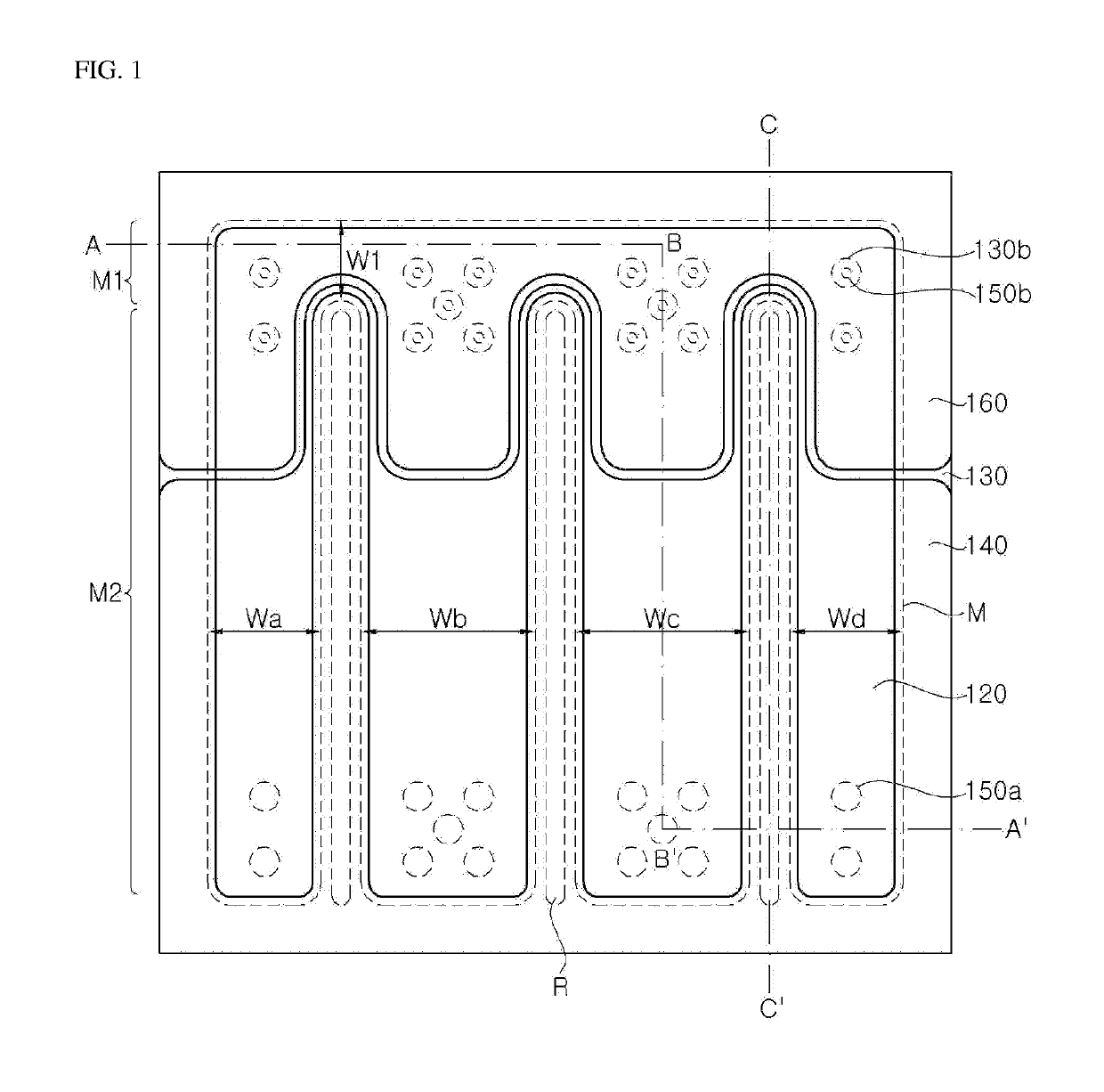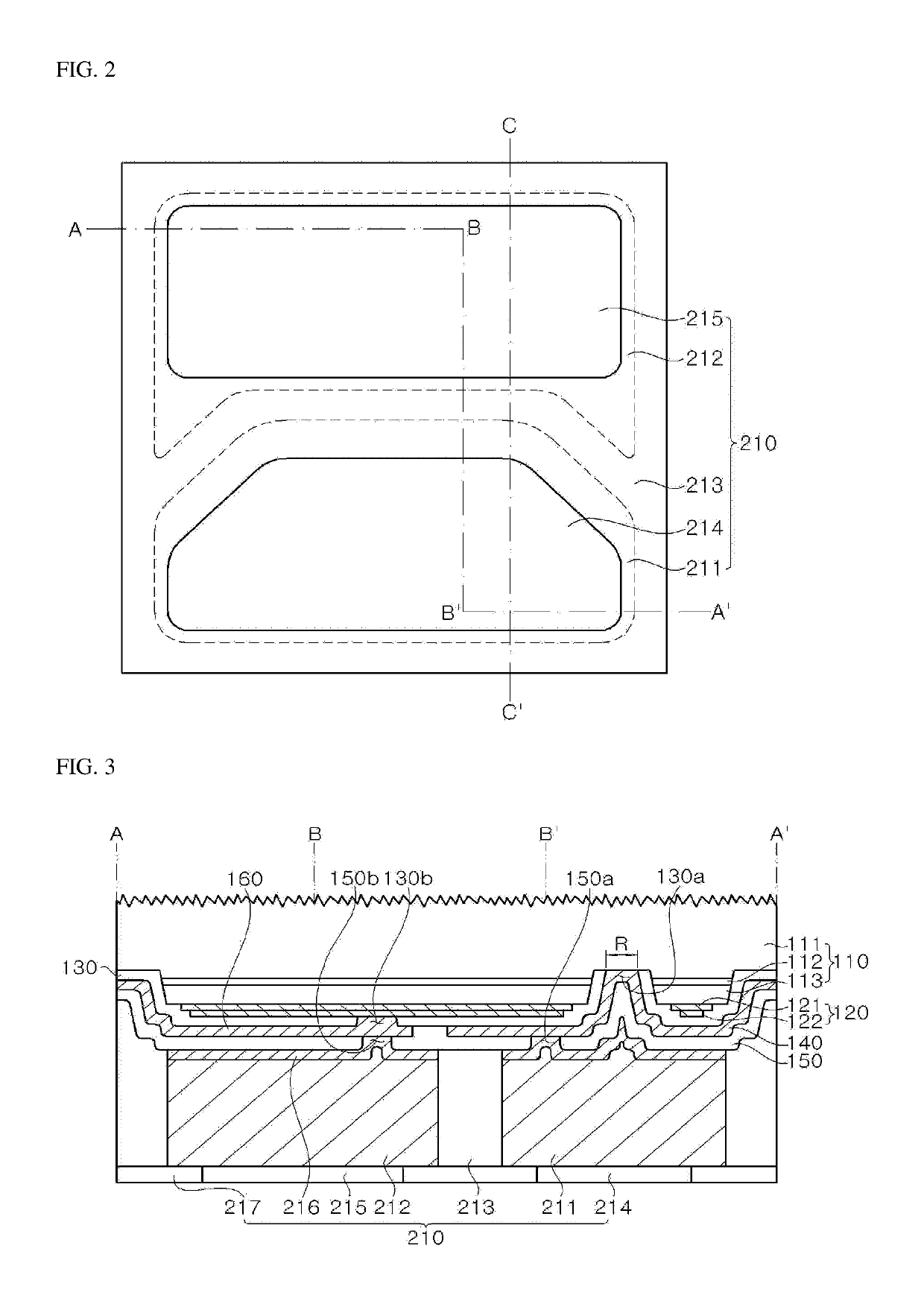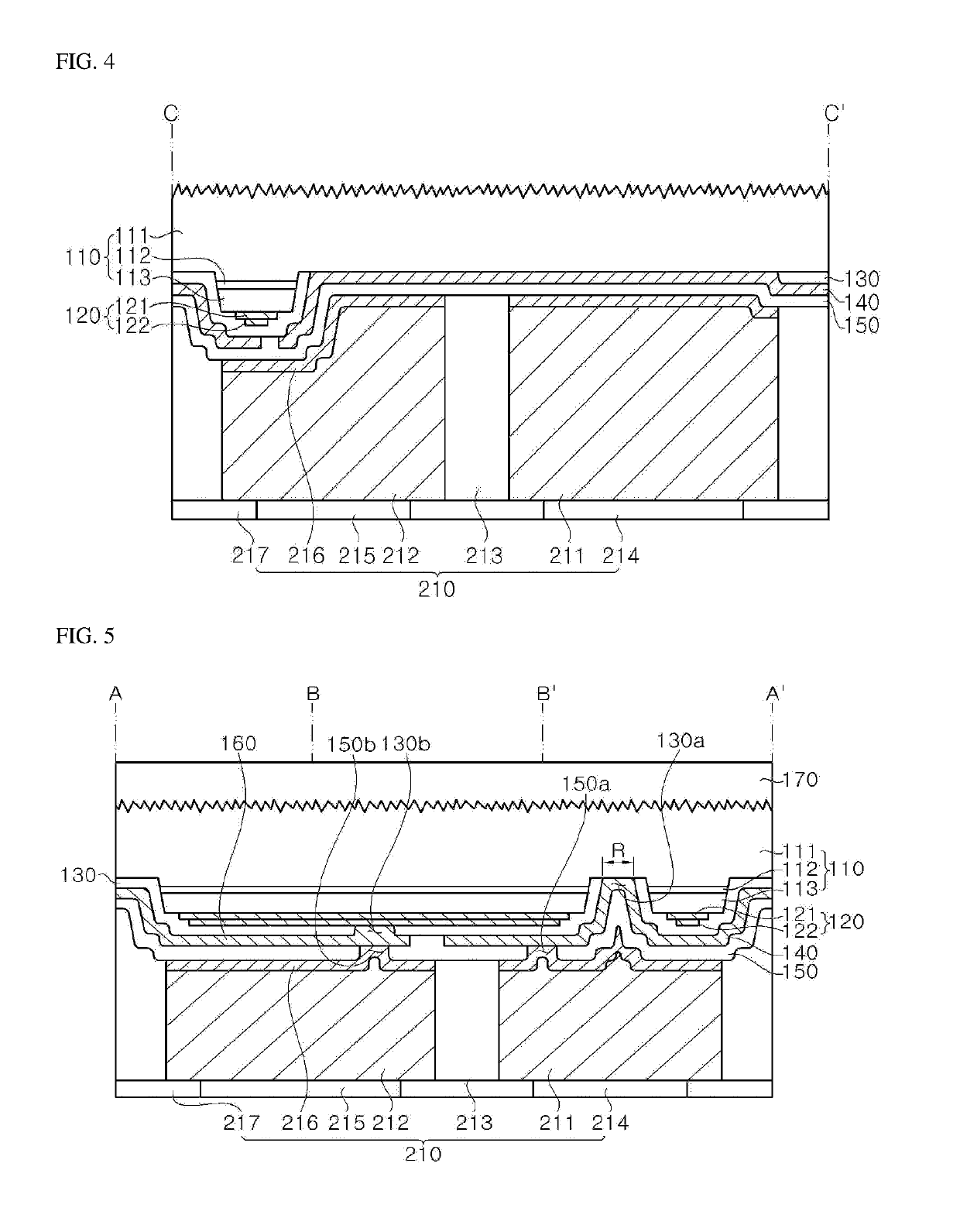Light emitting element including metal bulk
a technology metal bulks, applied in the direction of basic electric elements, semiconductor devices, electrical equipment, etc., can solve the problems of deterioration of light emission efficiency, less heat generation of chip scale packages, and poor luminous efficacy of light emitting elements, so as to achieve sufficient light emission regions, improve current spreading efficiency, and good luminous efficacy
- Summary
- Abstract
- Description
- Claims
- Application Information
AI Technical Summary
Benefits of technology
Problems solved by technology
Method used
Image
Examples
Embodiment Construction
[0045]Light emitting elements according to exemplary embodiments may be realized in various ways.
[0046]A light emitting element according to exemplary embodiments includes: a light emitting structure including a first conductivity type semiconductor layer including a contact region formed on a lower surface thereof, and a mesa including an active layer disposed on the lower surface of the first conductivity type semiconductor layer and a second conductivity type semiconductor layer disposed on a lower surface of the active layer; a second electrode disposed on a lower surface of the second conductivity type semiconductor layer and electrically connected to the second conductivity type semiconductor layer; a first insulation layer disposed on a lower surface and a side surface of the second electrode and including an opening exposing the contact region; an electrode cover layer disposed on a lower surface of the first insulation layer and adjoining the lower surface of the second ele...
PUM
 Login to View More
Login to View More Abstract
Description
Claims
Application Information
 Login to View More
Login to View More - R&D
- Intellectual Property
- Life Sciences
- Materials
- Tech Scout
- Unparalleled Data Quality
- Higher Quality Content
- 60% Fewer Hallucinations
Browse by: Latest US Patents, China's latest patents, Technical Efficacy Thesaurus, Application Domain, Technology Topic, Popular Technical Reports.
© 2025 PatSnap. All rights reserved.Legal|Privacy policy|Modern Slavery Act Transparency Statement|Sitemap|About US| Contact US: help@patsnap.com



